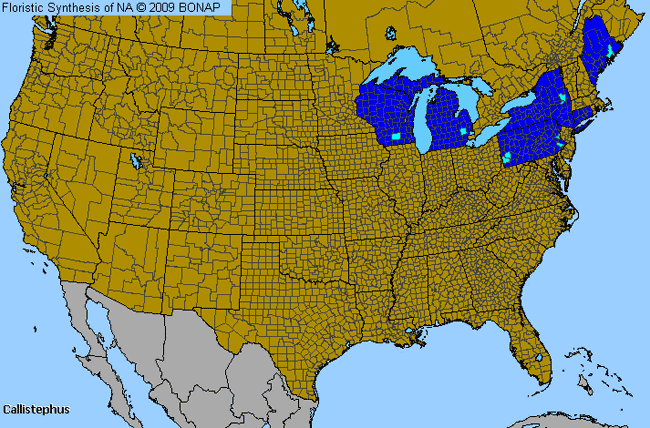China-Aster (Callistephus)

China-Aster Genus Details

The china-aster is a popular bedding plant that is native to the Orient. The leaves are oval-shaped and coarsely toothed along the edges. Flower colors range from purple and red to pink, white and blue. They usually reach up to 3 inches in height.
China-Aster Allergy Info

These are considered allergenic, although few formal reports can be found.
China-Aster Pollen Description

Callistephus has pollen of the Baccharis-type. Baccharis pollen grains are oblate-spheroidal to prolate-spheroidal; the amb triangular, 3-4 lobate and 3-4 colporate. The sexine is generally thick, tectate, and has long spines. The intine is thin but slightly thickened below the apertures.
The grains are typically 20-30 micrometers in diameter.
Species in This Genus

Allergenicity Legend:
 Mild Allergen |
Mild Allergen |
 Moderate Allergen |
Moderate Allergen |
 Severe Allergen |
Severe Allergen |
 Allergy Test Available
Allergy Test Available
China-Aster (Callistephus) is a genus of the ASTERACEAE family.
This genus includes the following allergenic species:
This genus includes the following allergenic species:













